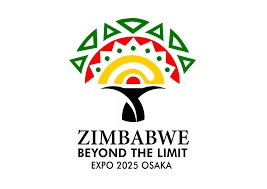
In a mission that blended diplomacy, innovation and national pride, Zimbabwe’s Parliamentary delegation to the Osaka World Expo 2025 demonstrated the country’s readiness to engage the world with confidence, vision and renewed purpose. Led by Hon. Lt. General (Rtd) Michael Rueben Nyambuya, the Deputy President of the Senate, the delegation participated in the global exhibition from the 7th to the 14th of September 2025, affirming Parliament’s constitutional role in overseeing national representation abroad and aligning international cooperation with domestic priorities.
The Osaka Expo 2025, themed “Designing Future Society for Our Lives,” provided a global stage for nations to showcase innovation and sustainable solutions for a better future. Zimbabwe participated under the sub-theme “Connecting Lives,” carrying its national message “Beyond the Limits,” a powerful statement of ambition that captured the spirit of resilience, creativity and transformation. The country’s participation, coordinated by ZIMTRADE, positioned Zimbabwe as a forward-looking partner ready to collaborate on issues of climate change, technology, agriculture, industrial growth and human capital development.
The delegation, which included Hon. Webster Shamu, Hon. Richard Ziki and Hon. Nomvula Mguni, used the visit to deepen parliamentary diplomacy and strengthen bilateral relations with Japan. At the heart of the mission was a reaffirmation of Zimbabwe and Japan’s long-standing friendship built on trust, mutual respect and shared development values since the establishment of diplomatic relations in 1980. In a farewell meeting before departure, Japan’s Ambassador to Zimbabwe, His Excellency Shinichi Yamanaka, and Hon. Lt. General Nyambuya discussed the importance of expanding cooperation in trade, tourism and agriculture. The Deputy President of the Senate expressed gratitude for Japan’s significant contribution to Zimbabwe’s infrastructure, citing the grant aid for the Harare-Chirundu highway projects which were completed without conditionalities, a gesture that speaks to genuine partnership.
Upon arrival in Osaka, the delegation was warmly received by Ambassador Stewart Nyakotyo, who provided an extensive briefing on the vibrant bilateral relations between the two countries. The discussions explored human capital development, agricultural exchange programmes and the promotion of smallholder horticulture through the NERICA rice initiative. The Ambassador also highlighted the JET Programme, through which Zimbabwean teachers serve as English instructors in Japan, and the annual scholarships that enable Zimbabwean students to pursue studies in Japanese universities. This educational cooperation was identified as a vital bridge for cultivating mutual understanding and supporting Zimbabwe’s Vision 2030 goals.
The Zimbabwe Pavilion at the Expo became a symbol of national pride and innovation. Located in the Commons B section, it combined digital, cultural and commercial elements, drawing thousands of visitors each day. The pavilion featured a virtual reality showcase of the majestic Victoria Falls, immersive trade and investment presentations and an impressive display of handcrafted art, carvings and beadwork that highlighted the country’s rich cultural heritage. Zimbabwe was the only nation offering a full virtual reality experience, a distinctive feature that resonated strongly with the Expo’s futuristic theme. The Pavilion’s commercial section, displaying products from local artisans, reinforced the “Brand Zimbabwe” narrative, merging culture and commerce into a unified story of creativity, authenticity and opportunity.
The delegation also toured the Japanese Pavilion, which epitomized innovation, sustainability and circular economy principles. It showcased how waste can be transformed into clean water, heat and electricity through advanced recycling technologies. The experience provided Zimbabwean legislators with practical insights into how Parliament could promote national policies on waste segregation, community education and eco-friendly infrastructure. This inspiration aligns with ongoing environmental efforts at the New Parliament Building in Mt. Hampden, where waste separation and green practices are already being implemented.
Equally inspiring was the visit to the Saudi Arabian Pavilion, where the delegation was officially invited to participate in Expo 2030, to be held in Riyadh. The Saudi Pavilion showcased the Kingdom’s futuristic vision under its Vision 2030 programme and emphasized global collaboration, technological innovation and sustainable urban design. The invitation marked a significant diplomatic milestone for Zimbabwe, signalling recognition of the country’s growing visibility in international forums.
Beyond the exhibitions, the visit extended into academia and innovation. The delegation toured Osaka Metropolitan University, a top institution driving multidisciplinary research in biodiversity, aquaponics and sustainable food systems. It was a proud moment when Dr. Ashleigh Pencil, a Zimbabwean scholar, presented her groundbreaking nutrition research on adolescent health, highlighting the rise of cardiometabolic diseases and proposing school-based lunchbox models inspired by Japan’s Shokuiku principles. The Parliamentary delegation pledged to support the pilot implementation of her nutrition model in Zimbabwean schools, integrating science, education and policy to address malnutrition.
At the KENTO Innovation Park, the delegation witnessed a living example of how government, academia and private enterprise can create a biomedical ecosystem that advances healthcare and community well-being. The model, combining research institutions, hospitals and companies within a shared space, offered valuable lessons for Zimbabwe in building innovation clusters to enhance healthcare delivery and stimulate medical technology development.
In its resolutions, the delegation outlined a forward-looking roadmap anchored on institutional coordination, accountability and early planning for Expo 2030. It recommended the establishment of an Inter-Ministerial Steering Committee, a multi-year Expo budget, a sovereign national pavilion and a technology-forward content plan that integrates virtual reality, green innovation and investment-driven storytelling. The report also emphasized the need for private sector mobilization, logistics readiness and continuous parliamentary oversight to ensure that the next Expo transforms global attention into tangible economic and diplomatic gains for Zimbabwe.
The Osaka Expo 2025 experience underscored the power of national representation when guided by purpose and precision. It showed that Zimbabwe’s story, when told with innovation and confidence, resonates beyond its borders. The delegation’s visit was not only a successful showcase but a rehearsal for Riyadh 2030, a testament to how parliamentary diplomacy can bridge nations, promote trade and elevate the country’s image on the world stage. The mission concluded with a shared commitment to move “beyond the limits,” carrying forward the lessons of Osaka into a more connected, innovative and globally engaged Zimbabwe.
Inside Zimbabwe’s Prisons, Hope Fights for Breath
When the Joint Parliamentary Committee on Justice and Human Rights toured Zimbabwe’s prisons, they did not just encounter concrete walls and locked doors, they walked into stories of endurance, silence and forgotten humanity. Beneath the steel bars and cracked ceilings, there is a world where survival has become a daily act of faith, and where the promise of justice feels like a distant echo.
From Gwanda to Chikurubi, the report reveals a pattern that reads less like statistics and more like a cry. Cells built for 60 now hold 210 souls, and at Chikurubi, over 2,600 inmates share space meant for just over 1,100. Men and women sleep shoulder to shoulder on cold floors, some wrapped in thin blankets shared between two. There are no lines of comfort, only commas of endurance, small pauses in a life sentence of waiting.
At Marondera Prison, rain leaks through rotten roofs while inmates use buckets for toilets. In Harare, water runs dry for days, leaving hundreds without a single drop to wash. The kitchens tell another story, cooking pots dented with years of neglect, firewood stacked where electric stoves should stand. Dinner is served at three or four in the afternoon, because darkness comes early when there is no power.
The report finds pain but also glimpses of resilience. At Connemara Open Prison, inmates plant maize and learn carpentry, welding and tailoring, not just to pass time but to reclaim dignity. There, prisoners can listen to the radio, study for exams and even take short home visits. It is a correctional island that proves what is possible when rehabilitation replaces retribution.
Yet, beyond those few lights, the shadows remain long. Prisons across the country are haunted by drug shortages. Those with chronic illnesses depend on relatives for medication, while psychiatric patients wait months for treatment that never comes. One nurse often serves hundreds, with no fridge to store medicine and no gloves to protect her hands.
The committee’s report captures the silent heartbreak of long remand, men and women who have not been convicted but live behind bars for years, forgotten by the system. One official described them as “the prisoners of time.” Their crime, often, is poverty, an inability to afford bail, a lawyer or transport to court.
Still, there are patches of hope. Hurungwe Prison, with its vast farmland, feeds itself and nearby facilities, proving that prisons can become engines of productivity rather than drains of despair. Marondera Female Prison, the only open female correctional institution in Southern Africa, offers women a chance to rebuild. They garden, sew, study, and dream of life after confinement. But stigma and lack of starter packs upon release often drag them back into the cycle they fought to escape.
The report is not just a catalogue of hardship, it is a plea for compassion, modernisation and policy reform. It calls for digitised inmate records, humane remand laws and prisons that respect motherhood and disability. It demands that judges return to the cells they sentence people to, that health ministries equip clinics and that education be restored as a path to redemption.
Behind the statistics lies a deeper truth, a nation’s character is reflected in how it treats those it confines. Zimbabwe’s prisons may be old, cracked and overcrowded, but within them are human beings still capable of dreaming, learning and transforming.
The Parliamentary Committees did not just expose the broken, they challenged the country to reimagine justice, because prisons should not be places where hope dies quietly, they should be where it begins again.




